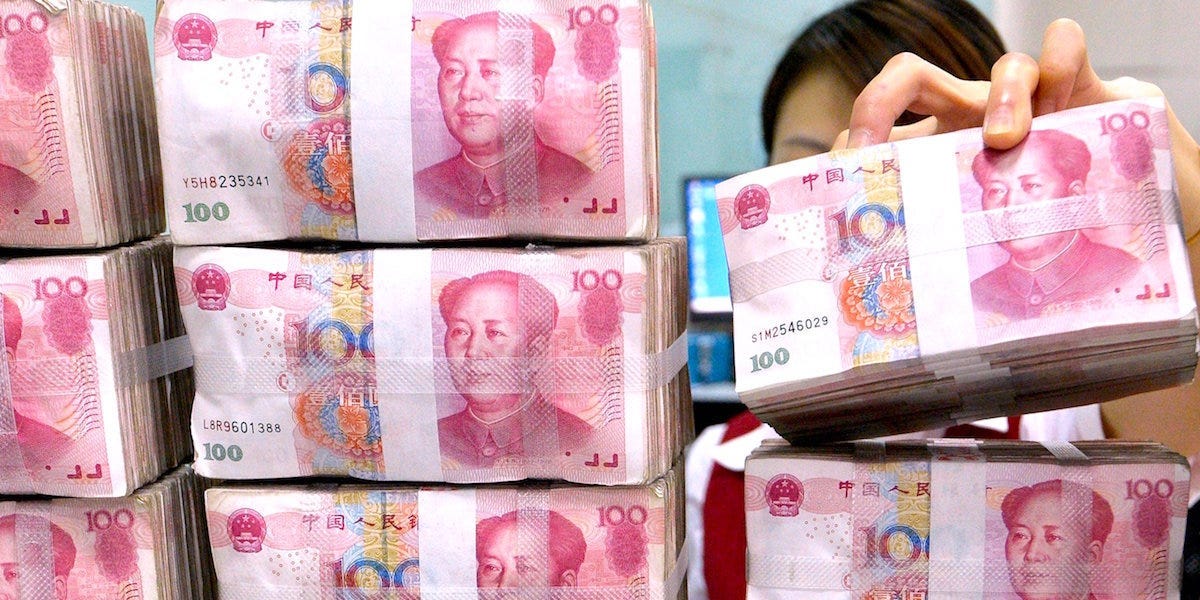Six Chinese state-run banks cut their deposit rates, Bloomberg reported. This will eventually ease lending rates, prompting more borrowing among consumers and businesses. But China may still have to introduce other stimulus policies to incite further growth. Loading Something is loading.
Thanks for signing up!
Access your favorite topics in a personalized feed while you’re on the go.
Six of the largest state-run banks in China have slashed deposit rates, as the country looks for ways to stimulate its decelerating economy.
On Thursday, institutions such as Industrial & Commercial Bank, Agricultural Bank of China, and Bank of China lowered rates by 15 basis points for three-year and five-year deposits and by 10 basis points for two-year rates, Bloomberg reported.
Additionally, on-demand deposit rates dropped by 5 basis points, falling to their lowest level since 1996, The Financial Times said.
Previous rate trimming occurred in September. This week’s moves come at the urging of Chinese authorities, who hope the extra funds may stimulate consumption and ease fundraising difficulties.
After an eventful first quarter, expectations of a continued post-pandemic rebound in China dimmed as manufacturing output, exports, and consumer activity all cooled substantially.
And while the country has lowered its growth target from prior years to 5% for 2023, some analysts indicate that progress may be challenged, given limited investment and increasing geopolitical tensions with the West.
By lowering deposit rates, banks can expect reduced costs, leading towards diminished lending rates. According to one analyst cited by FT, Thursday’s cuts could save state lenders $16.8 billion in funding.
The rate’s easing would also incentivize more borrowing among consumers and businesses. Meanwhile, Chinese households may also be disincentivized to stockpile more cash with lenders, having accumulated $2.6 trillion in savings earlier in the year.
It’s unlikely that China will ever provide direct stimulus to its economy, analysts previously told Insider, as the country is still contending with the debt consequences of its last stimulus-driven recovery.
But according to Bloomberg, expectations are rising of further policy changes that may incite economic growth. For instance, reserve requirement ratios may be cut by China’s central bank in upcoming months.
